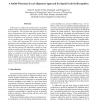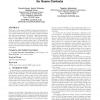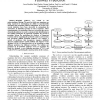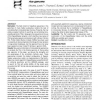700 search results - page 90 / 140 » Transducing Markov sequences |
AVSS
2006
IEEE
14 years 2 months ago
2006
IEEE
In this paper we address the spatial activity recognition problem with an algorithm based on Smith-Waterman (SW) local alignment. The proposed SW approach utilises dynamic program...
MIR
2006
ACM
14 years 2 months ago
2006
ACM
We propose a robust scene recognition framework using scene context information for multimedia contents. Multimedia contents consist of scene sequences that are more likely to hap...
CIBCB
2005
IEEE
13 years 10 months ago
2005
IEEE
—Metabolic pathways are crucial to our understanding of biology. The speed at which new organisms are being sequenced is outstripping our ability to experimentally determine thei...
BIOINFORMATICS
2004
13 years 8 months ago
2004
Motivation: The high content of repetitive sequences in the genomes of many higher eukaryotes renders the task of annotating them computationally intensive. Presently, the only wi...
MVA
2007
13 years 8 months ago
2007
The majority of existing tracking algorithms are based on the maximum a posteriori (MAP) solution of a probabilistic framework using a Hidden Markov Model, where the distribution ...



